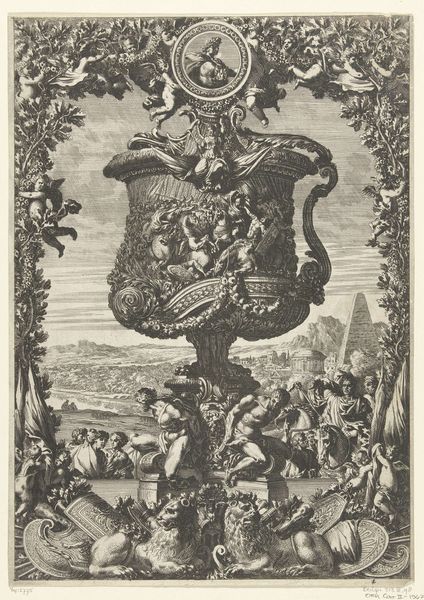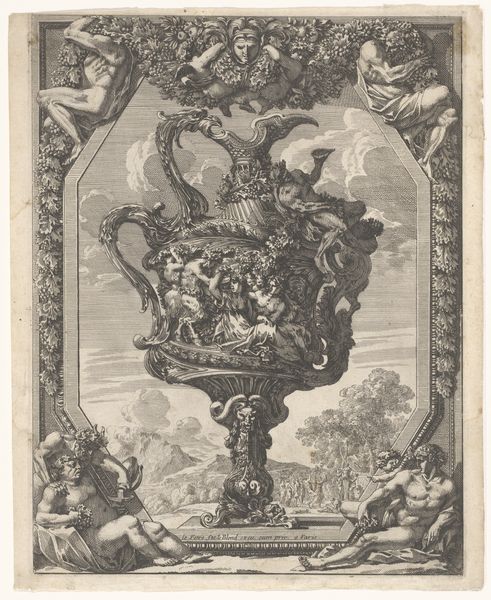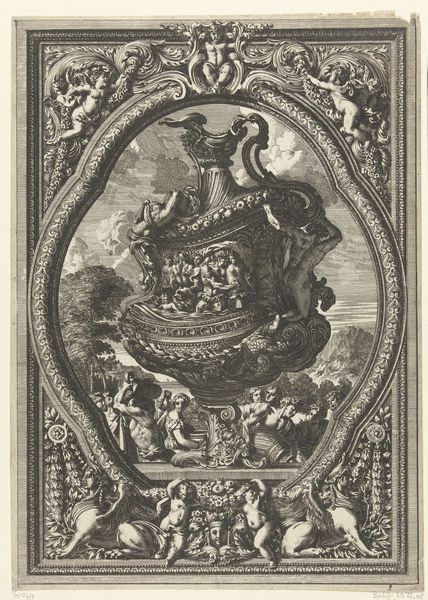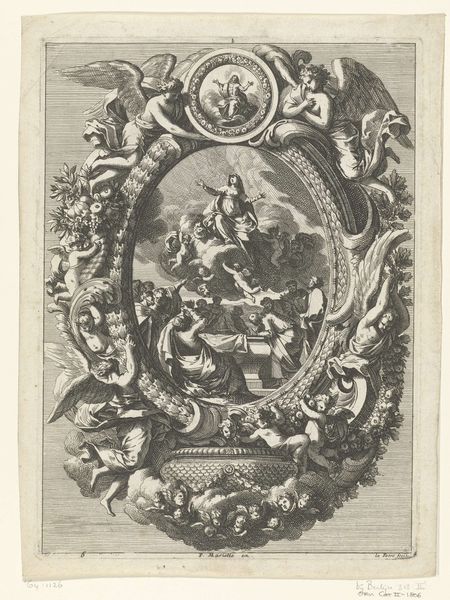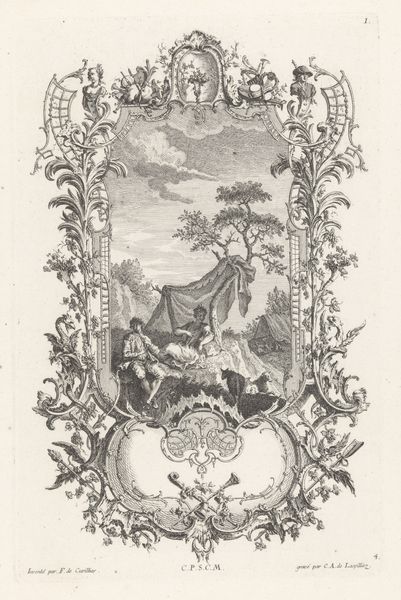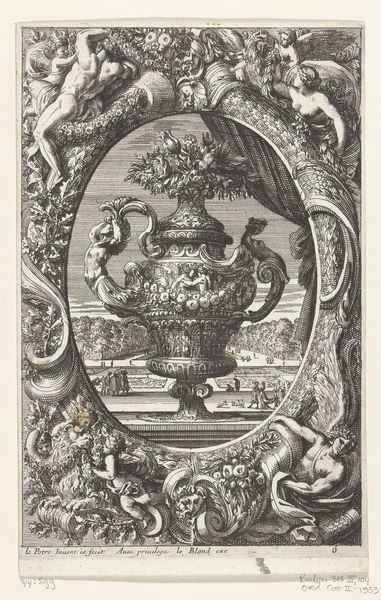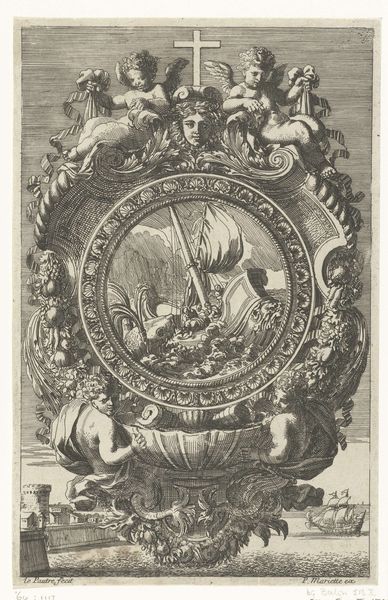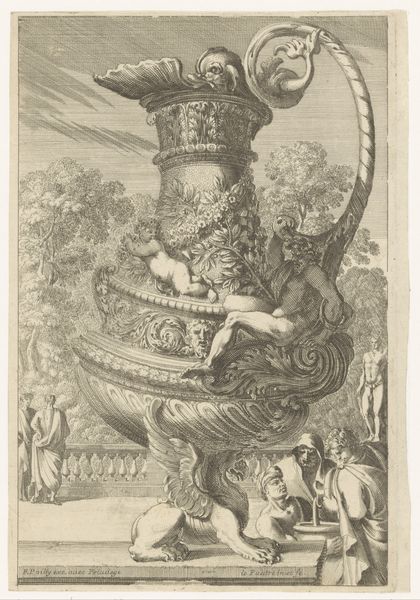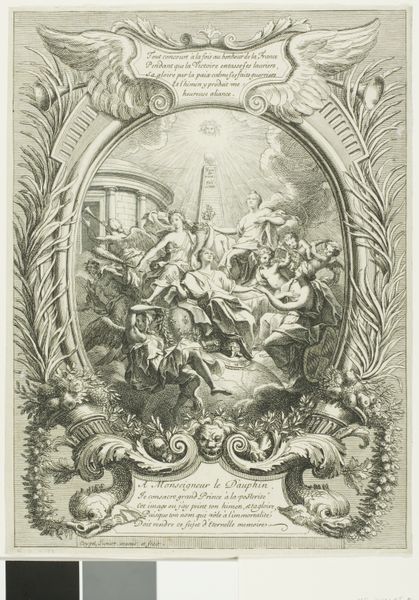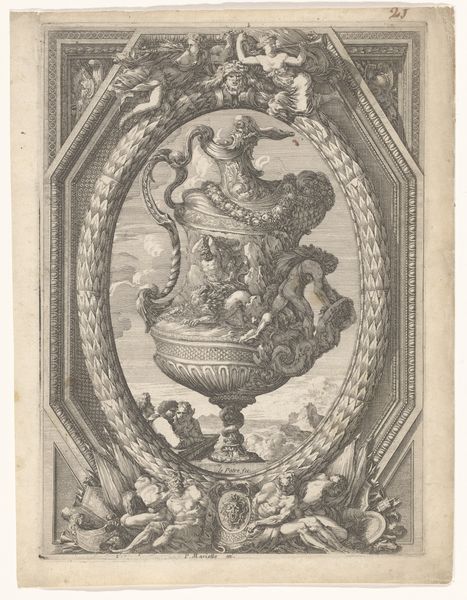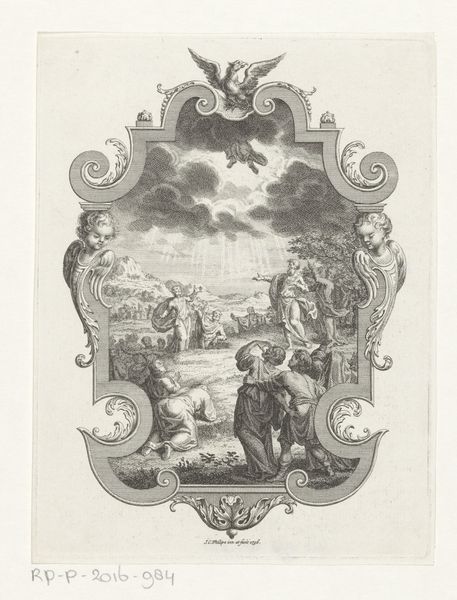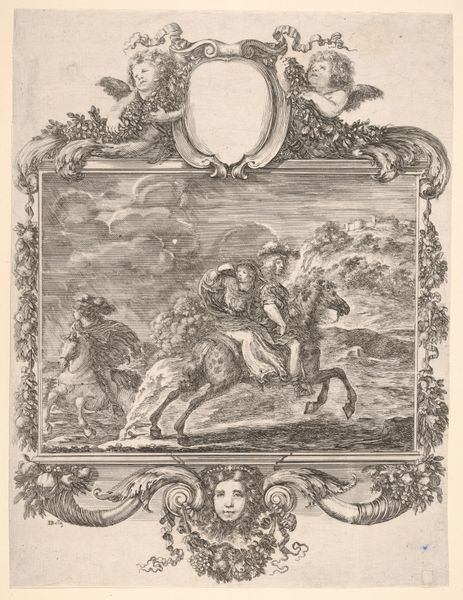
print, sculpture, engraving
#
allegory
#
baroque
# print
#
sculpture
#
figuration
#
form
#
sculpture
#
line
#
engraving
Dimensions: height 323 mm, width 230 mm
Copyright: Rijks Museum: Open Domain
Curator: Looking at "Schenkkan met Neptunus," a print by Jean Lepautre, circa 1650 to 1664, from the Rijksmuseum collection, I’m struck by its baroque extravagance. It is an engraving on paper. What are your initial thoughts? Editor: Well, my first thought is "wowza"! It's like looking at the most extra water pitcher ever designed. Neptune's having a serious party on this thing, doesn't he? The detail is insane. Curator: Indeed. The abundance of detail and ornamentation is quintessential Baroque, showcasing power and opulence through its allegorical representations. Consider Neptune, the Roman god of the sea, and how the imagery positions aquatic dominance within a European context of exploration and colonization. Editor: Right! It's dripping with symbols. Like, you wouldn't casually serve lemonade out of this, would you? More like an exclusive royal punch… maybe involving mystical sea herbs or something. All this intense cross-hatching makes it super dynamic too. It feels like everything is in motion! Curator: And notice how the form itself is almost aggressively figurative, bordering on sculpture. The lines, particularly in the border and the depiction of figures, add to its complex layering of themes, alluding to a complex socio-political ecosystem that would celebrate this level of… aspiration, shall we say? Editor: Aspiring to the ultimate water cooler! Honestly, it's kind of dizzying, isn't it? You almost don't know where to look first. I’d be interested to know what this meant in a historical sense for women. Curator: Absolutely, thinking through a feminist lens, the representation of these classical narratives often omits or marginalizes women’s roles while emphasizing a patriarchal power structure through figures like Neptune. Editor: It's interesting that even within the most overtly powerful and bombastic of images, we can still locate really interesting contemporary conversations. This work provides not only visual fascination but prompts a larger question about representations of authority. Curator: Agreed, I think that through discussing identity and political contexts of works like these we may create more pathways towards an expansive interpretation of historical image-making.
Comments
No comments
Be the first to comment and join the conversation on the ultimate creative platform.
